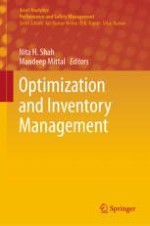2020 | OriginalPaper | Chapter
14. Effects of Pre- and Post-Deterioration Price Discounts on Selling Price in Formulation of an Ordering Policy for an Inventory System: A Study
Authors : Mihir Suthar, Kunal T. Shukla
Published in: Optimization and Inventory Management
Publisher: Springer Singapore
Activate our intelligent search to find suitable subject content or patents.
Select sections of text to find matching patents with Artificial Intelligence. powered by
Select sections of text to find additional relevant content using AI-assisted search. powered by
